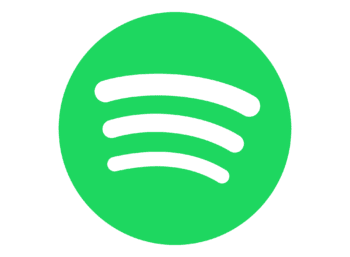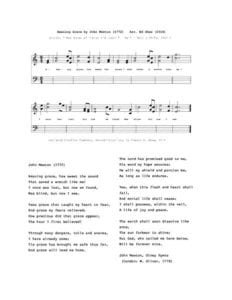3 Ways Spotify’s Plagiarism Tool is Different

Last week, the music streaming service Spotify attracted headlines from all over the world after a European patent filing revealed that they were working on a new tool that would help spot songwriter plagiarism, whether accidental or intentional.
Though many, including myself, initially thought that this was part of their ongoing battles over songwriter royalties, that doesn’t appear to be the case.
Spotify’s service is about addressing another issue: The perception that wrtiting and publishing music is risky business.
Following the Blurred Lines ruling, many musicians were worried that their songs could also be deemed rip offs and that could lead to court battles and royalty headaches down the road.
Though other rulings such as the Stairway to Heaven case, which concluded in October, should calm those fears somewhat, there is still a lot of fear in the songwriter community.
That, in turn, seems to be what Spotify is addressing. As an analysis of the tool by Bobby Owsinski on Hypebot points out, Spotify’s tool is more about helping songwriters avoid litigation and less about royalties or finding infringements on Spotify’s platform.
It’s a plagiarism detection tool meant to help prevent copyright infringement cases, not start them.
To that end, the tech is worth a brief exploration and an expalantion of why it is so unique.
How it Works

The way the technology works is that it doesn’t look at the song’s composition, but rather, the song’s lead sheet.
A lead sheet is a form of musical notation that only focuses on including only the essential elements of the song. This includes harmony, melody, tempo and lyric information.
Other aspects are either improvised by the performers or handled by an arranger. They are a way to quickly communicate what a song is about while allowing performers the ability to have some creative freedom.
These are often used by cover bands so they have access to a large library of music quickly. However, they’re also often used when writing and developing songs, especially in a collaborative environment.
Their truncated nature also makes them easier to compare and that’s exactly what Spotify’s tool does, take the lead sheets and compare them to a database of other such sheets.
When similarities are found, they are flagged. From there, as with all plagiarism checks, the human has to make the ultimate decision about whether the overlaps are problematic or something that can be safely ignored.
It is a very simple idea but it’s the application of it that makes it unique. In truth, there’s not really a tool like it and there are three reasons why it stands out.
1: Meant for Composers
Back in October, we looked at the three types of plagiarism analyes. However, it can be argued that Spotify has made a fourth with this new tool.
Plagiarism detection is usually a tool for teachers, editors and those that believe they were plagiarized. Spotify’s system turns this on its head by making it for the original author.
This might seem silly as the original composer should have a handle on whether they copied someone else’s work. But, with music, that may not be the case. Many composers express concern about subconscious copying, including cryptomnesia.
And, with music, cryptomnesia may be more possible. While it’s not possible to subconsciously remember a paragraph or even a whole sentence of a text work, it is possible to subconsciously remember a few bars or chords from a song.
Sure, there have been other products offered to authors including Turnitin’s now-closed WriteCheck, but those were supplemental uses of a different product.
Disclosure: I am a former paid blogger for Turnitin, which is mentioned in this article.
Spotify appears to be creating a product ground up for authors to detect plagiarism in their own work. That is extremely rare, if not completely novel.
2: Works with Lead Sheets
Plagiarism detection isn’t new to music. It’s likely you even use tools such as Shazam and Musixmatch to detect what song is playing. Those same approaches can spot similarities in recorded music and take action.
One of the prominent providers in this space has been Audible Magic, which is used by Facebook, Twitch and Soundcloud to filter out infringing uploads. YouTube has their own system that they’ve built.
Such systems have gotten so advanced that they can detect short samples of music and have been used to bring lawsuits in cases where that sampling wasn’t licenced properly.
However, all the tools above have one limitation: They work with recorded music, not the composition (or the lead sheets). This is an issue because many of the most recent music battles, including Blurred Lines and Stairway to Heaven, centered around the compositions.
Though I have little doubt Spotify is not the first to work on such a system, it is the first to potentially bring it to a mass market like this. That, in and of itself, may be a huge game changer.
3: It Comes from Spotify
Spotify, according their patent, is creating a product that targets a new audience with a new way to detect copying. All of that is unique enough. However, Spotify itself adds a layer to this story.
Most systems for detecting copied content from companies dedicated to that, whether it’s Turnitin for text, Audible Magic for audio, etc. YouTube is the only major player to have wholly developed their own system and it was originally built for completely internal use.
Spotify isn’t just creating a new system to detect plagiarism but is targeting it at an outside audience.
However, this may wind up being more of a hindrance than a help to the tool. Spotify has earned a great deal of mistrust among songwriters and, as George Howard, a professor of music business at Berklee College put it to OneZero, “I don’t think in any scenario anyone can say Spotify’s motive is to be helping artists.”
According to Howard, he believes that this is an attempt to either defend themselves against lawsuits or to simply find tracks they don’t have to pay royalties on. There’s also speculation the system could be used to create A.I.-generated music.
In short, even if Spotify’s offering is purely altruistic, which it likely isn’t, it will never be accepted as such. Songwriters have a tremendous mistrust of Spotify and that isn’t likely to change.
Bottom Line
There is a LOT of reason to be skeptical here. Spotify is a company with a very tense relationship with songwriters, and we’ve seen few details on how the system works behind the scenes and how it benefits Spotify long term.
There’s also no guarantee that Spotify will ever implement the system. As Spotify itself noted in the above OneZero article, not every patent becomes a part of its product. This may simply never leave the design/development stage.
That said, if it does become part of the Spotify’s product, it would be one of the most unique anti-plagiarism offerings in the world. However, whether that uniqueness is a good thing or not on whether you feel the importance of the product outweighs the risk of working with Spotify.
But even if this product never comes to fruition or never sees widespread adoption, it’s still an incredibly unique beast. The fact a major tech company spent so much money developing this and getting it to the patent stage tells me that there is some shifting taking place when it comes to music plagiarism.
Want to Reuse or Republish this Content?
If you want to feature this article in your site, classroom or elsewhere, just let us know! We usually grant permission within 24 hours.
